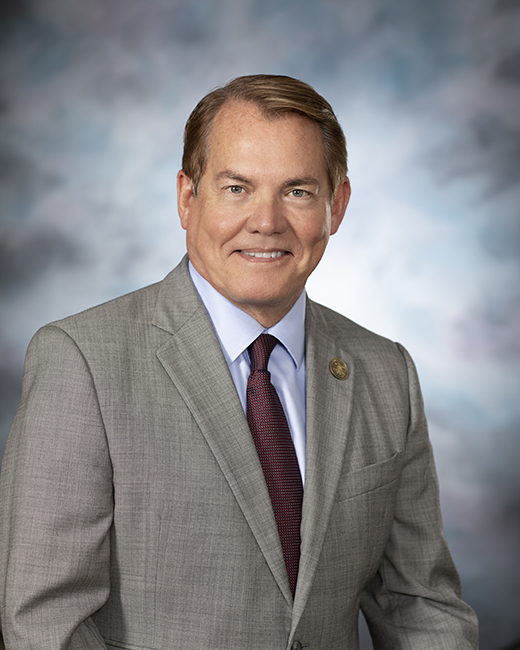COVID-19 testing available at medical center, health clinics

This article appeared in the May 2020 edition of the Chickasaw Times
Coronavirus testing is avail-able to the general public at the Chickasaw Nation Medical Center in Ada and the Chickasaw Nation health clinics in Ardmore, Tishomingo and Purcell.
“Early on, Governor Anoatubby declared a state of public health emergency within the Chickasaw Nation,” Chickasaw Nation Secretary of Health Dr. Charles Grim said. “Among other things, that allowed us to open up and also treat a (non-native) population if we deemed it necessary to protect the public health of the state, our area and our citizens.”
Testing tents are set up at all three facilities and are designed to make the testing process convenient and safe. “It’s relatively quick and it allows patients to remain in their cars, Dr. Grim said. “When you drive up, security personnel tell you what’s going to happen. You will be given a form with three sticky places on it for you to put your photo ID, your insurance card and your CDIB card, if appropriate.”
No one will be turned away, Dr. Grim said, including those who don’t currently have a primary care provider or insurance. Testing results are usually available within two to three days. Those tested will be contacted with negative results or may call the testing call center themselves.
“We try to let their primary care physician call them if it’s a positive result (indicating coronavirus) to discuss with them what steps to take next,” Dr. Grim said.
One of the advantages of living in a more central part of America is the extra time it has provided to prepare for what eastern and western parts of the country have already experienced.
“We know there is a spike coming in Oklahoma,” Dr. Grim said. “We’re in that phase in Oklahoma right now where we’re starting to see the numbers ramp up. We’re lucky in being in the middle of the United States because we’ve had as much time as we’ve had to prepare. We’re ready.
“We have an adequate number of hospital beds and ICU beds, and it looks like we have an ad-equate number of ventilators to take care for our people at the max peak in Oklahoma.“
The health care staff has re-vamped delivery of care to emphasize virtual visits by employing Zoom and FaceTime for physicians and patients to communicate with each other.
“If there is one bright spot it is that we may have launched telehealth forward by a decade or more in adoption and use in terms of health care and acceptance by the general public,” Dr. Grim said. “I wish it didn’t hap-pen this way, but it’s happened quickly and a lot of health systems are doing it.”
Physicians who were reluctant to try telehealth have found it offers the advantage of being able to see patients quickly and easily. Patients like it too, Dr. Grim said, because they don’t have to get in their cars and travel.
Virtual visits are preferred, but patients can visit in person.
“If you’re not sure whether you should come in or not, come in,” Dr. Grim said. “Call us first. Talk to a doctor, tell them what’s going on and ask if you should come in.”
Area residents can continue to do their part to stop the spread of the virus by washing their hands, donning masks in public and practicing social distancing.
“There are people walking around spreading it who have no idea they’re spreading it,” Dr. Grim said. “Cloth masks are not intended to protect you as an individual from getting the virus, but to prevent you from giving it to other people. If you cough or sneeze, your droplets will be trapped in the mask and it will be less of a chance you spread it to anyone else.”
The American Enterprise Institute has advised four conditions are necessary for a state or region to begin relaxing the emphasis on social distancing and other measures implemented to stop the spread of coronavirus.
First is for health care facilities in the area to experience a 14-consecutive-day reduction of cases of the disease, the number of hospitalizations and deaths. Second is for health care systems not to be in crisis mode while caring for coronavirus patients, enabling them to easily accommodate routine care patients simultaneously.
Third, adequate and widespread testing must be available so anyone who wants or needs a test is able to get it easily and quickly. Fourth is the ability not just to quickly identify someone with coronavirus, but to contact all who had contact with the patient in order to provide them testing and treatment if it turns out they also have contracted it.
Dr. Grim said his staff had put in long hours in a team effort fighting the COVID-19 pandemic. The team is not, he said, doing so as an isolated community.
“We’re on multiple calls per day and week with federal agencies,” Dr. Grim said. “The White House has a call with Indian Country every week and they have had as many as eight or 10 agencies on those calls to talk about access to resources, technical help and expertise. This includes the Centers for Disease Control as well.”